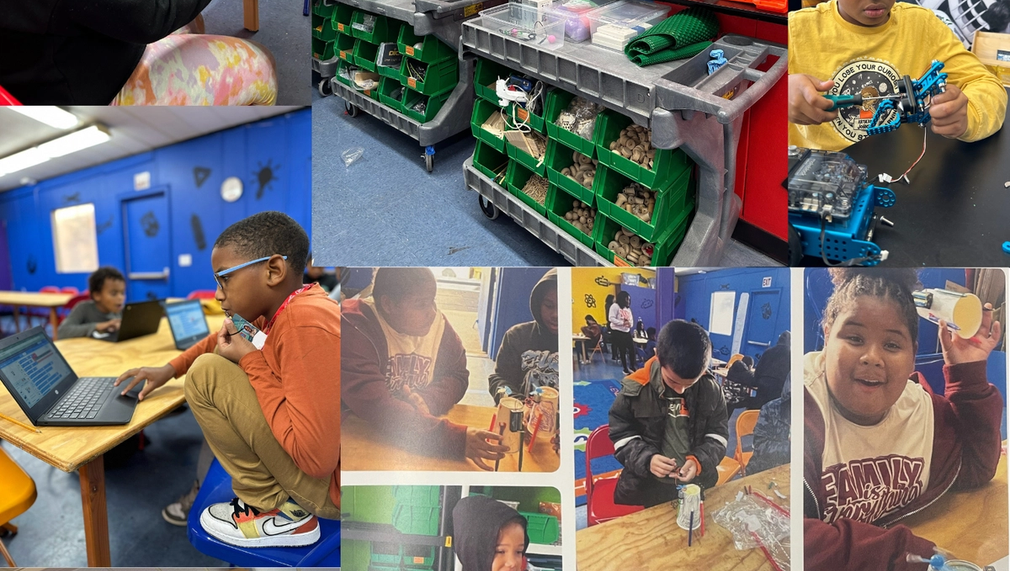Learning by Design Gets Busy Designing and Innovating our World
Learning by Design’s Innovation & Design program unfolds in our Maker Space, lovingly dubbed “The Lab,” where students dive into coding, engineering, AI, Metaverse, Robotics, and 3D printing. Guided by the Design Process, students choose community projects to apply these skills hands-on. “The Lab” fosters innovation, design, technology, creativity, building, prototyping, iteration, collaboration, and entrepreneurship among our students. Funding will provide materials such as 3D printing supplies, building tools, laser cutters, Arduinos, & more.

What is the primary issue area that your application will impact?
K-12 STEAM education
In what stage of innovation is this project, program, or initiative?
Expand existing project, program, or initiative (expanding and continuing ongoing, successful work)
What is your understanding of the issue that you are seeking to address?
LA County youth face unique challenges, including the influence of gangs, drugs, and declining resources. This poses a threat to the future of the technology industry and LA County’s economy. For some South LA students, navigating traumatic environments, minimal parental support, compounded by challenges like ADHD/ASD and emotional trauma, severely limits their potential for success. The lack of local resources forces families to travel outside of their communities to participate in fee based robotics programs. We understand some children learn best through precision, repetition and predictability which STEAM brings. Statistically, traumatized children have no space left for learning with a high risk of later dropping out and entering the school-to-prison pipeline. Frequently labeled as "bad" or "unruly," damaging their self-esteem and exacerbating their mental and emotional hardships. These children often slip through the cracks of the system inevitably continuing generational trauma.
Describe the project, program, or initiative this grant will support to address the issue.
We are enhancing our Innovation Lab, a Maker Space created to provide practical STEAM instruction using the Engineering Design Process. "The Lab" offers workshops that focus on teaching students to ask questions, brainstorm solutions, create, and problem solve. The goal of LbD’s Lab is to be an educational hub where current and former students can come to study and learn about STEAM related subjects. The Lab will host twenty science and engineering workshops, along with collaborative robotics and engineering projects school-wide. These projects encompass a range of activities such as creating robot environments, doodle bots, balloon-powered cars, circuit and LED boards, tinker wagons, and more. They offer students an opportunity to uncover hidden talents and foster healing through creative expression. The Lab provides space for hands-on innovation, both during and after school. Students will build robots and use code to create movements, sounds, produce lights, detect objects, follow lines, and complete engineering challenges. Learning by Design seeks to provide students ongoing STEAM instruction, using existing and new hands-on materials for interactive lessons, produce end of session culminating projects, and make STEAM education a focal point for the school and community it serves.
Describe how Los Angeles County will be different if your work is successful.
Tech literacy equips LA youth with marketable skills, creative problem-solving abilities, and team-building experience, ensuring they can add value to the future economy and bring tech jobs to LA County for years to come. By teaching elementary-aged kids robotics and engineering skills, we provide a foundation for success in a field poised to change the way the world works. As AI and robotics become more prominent in everyday life, these students will grow up to create, compete, perform, and lead the tech industry as fully equipped engineers. This ensures that when future stadiums and facilities are built, LA County can rely on its own vast pool of robotic engineers instead of outsourcing jobs. As future students see people who look like them and come from the same neighborhoods as them become successful, they will know without doubt they too can make their way to greatness.
What evidence do you have that this project, program, or initiative is or will be successful, and how will you define and measure success?
For LBD’s Annual Spring Fling event, each grade designed a cardboard carnival game. Among them were Plinko, Ring Toss, and a Claw Machine crafted by a duo, one who has ASD. His parents were in awe of his creation. Such a moment is precisely why The Lab supports all of the innovation and creative building that our students engage in. We created photo boards chronicling student’s STEAM projects which provided the proof needed to see their future more clearly. Seeing themselves through the eyes of others had a positive impact on the behavior of students with disciplinary issues. LbD also noted a 75-point increase in our students' math scores over the past year. The Lab provides a safe space where students who typically feel fidgety, distracted, and unruly become focused, showcasing abundant creativity and becoming invaluable helpers. LbD has created an opportunity for them to lower the walls they’ve built to shield themselves from their emotions, allowing their true selves to shine.
Approximately how many people will be impacted by this project, program, or initiative?
Direct Impact: 150.0
Indirect Impact: 500.0